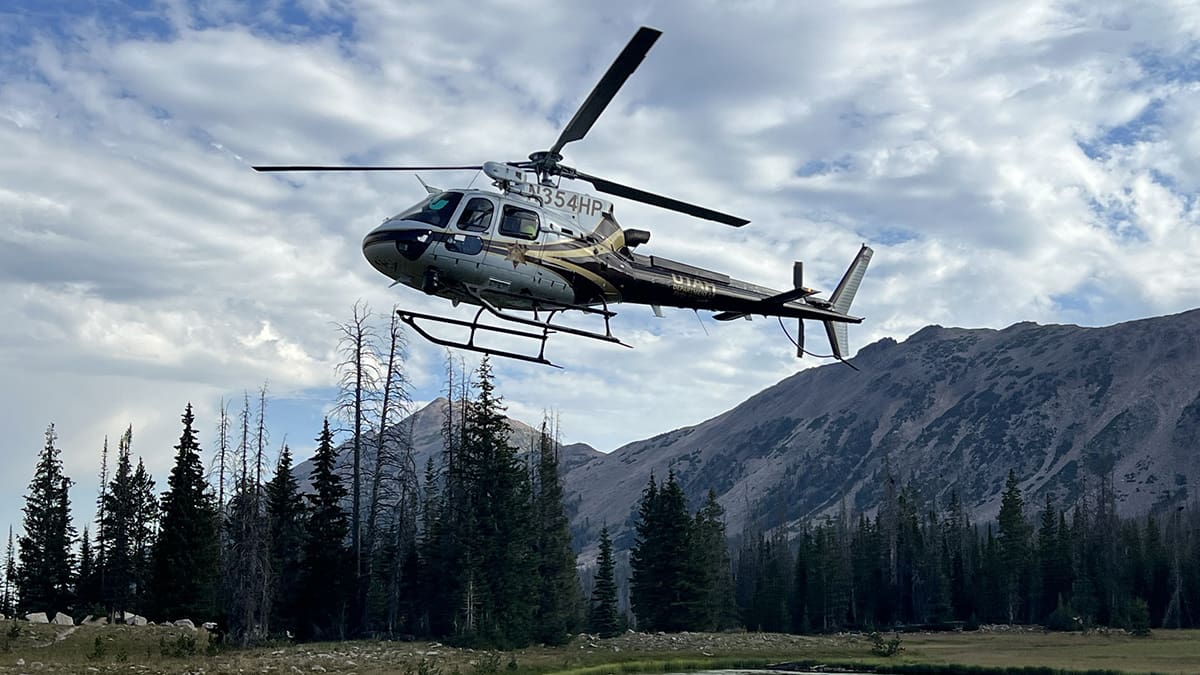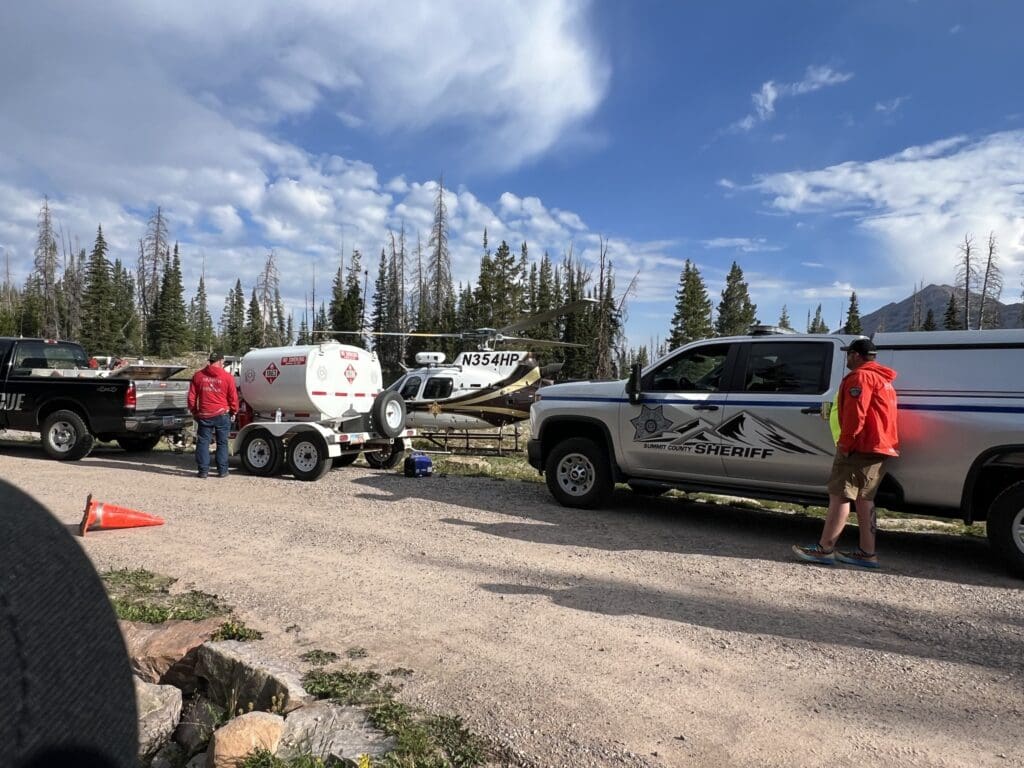Politics
Only 7% of Search and Rescue missions involve locals, Summit County backs bill to ease burden on taxpayers

A DPS helicopter takes off in the high Uintas in August of 2024. Photo: Summit County Utah Search and Rescue
SUMMIT COUNTY, Utah – In 2024, Summit County Search and Rescue responded to emergencies an average of once every three days—yet only 7% of those missions involved local residents, according to a statement from the Summit County Sheriff’s Office. As the majority of search and rescue operations are for visitors, the office says local taxpayers are shouldering an increasingly unsustainable financial burden.
A bill reintroduced in Congress by Utah Rep. Celeste Maloy seeks to address this growing strain. The Public Land Search and Rescue Act would establish a federal grant program to help counties cover the costs of emergency response missions on federally managed lands—particularly in rural areas like Summit County that draw large numbers of outdoor recreators but have small tax bases.

Under Utah law, local sheriffs are responsible for funding and coordinating all search and rescue (SAR) missions. In Summit County, the team is made up primarily of volunteers—backed by only two paid staff—but the scale and frequency of their response is significant. In 2024, 71% of their deployments assisted people from elsewhere in Utah, and 22% were for out-of-state visitors. Missions ranged from recovering lost hikers and injured skiers to evacuations during wildfires and multi-day efforts to locate deceased individuals.
“We actively encourage visitors from around the country and the world to come and experience all that our region has to offer,” the Sheriff’s Office said. “But currently, SAR operations are primarily funded through property taxes paid by Summit County residents.”
The problem is especially acute in the county’s eastern region, where SAR incidents are more common but the tax base is smaller.
“Funding SAR operations remains a significant challenge,” the statement continued. “We welcome and strongly encourage the proposed legislation aimed at providing additional support for SAR efforts.”
If passed, the grant program would reimburse counties for up to 75% of SAR costs, with local agencies responsible for the remaining 25%. The goal is to relieve local governments of the growing financial pressure associated with rescues on federal land—a consequence of Utah’s booming recreation economy.
“Utah draws people from across the country with its one-of-a-kind recreational opportunities,” Maloy said in a release. “Unfortunately, with most of our land federally managed, local sheriffs and towns are left to shoulder the costs of search and rescue operations without tax revenue to support them.”

















